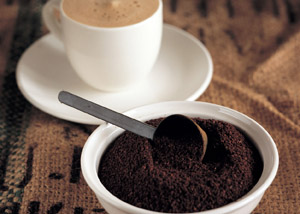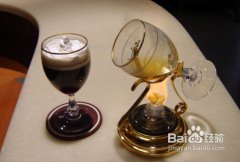Colombia Coffee Tibica Coffee Grinding Degree Roast Degree Treatment Method

And the famous coffee in Ethiopia, the hometown of coffee, can also be found everywhere. From wild coffee to modern plantations, people can still find ways to grow coffee here. It has two producing areas: "Hara" in the Hara Plateau in the northeast and "Yeka Snow Fine" in the middle. Hara coffee has a charming aroma, most of which are sun-dried and light in taste, and are often called "red wine in coffee". Yeka snow caffeine is favored by Germans and Japanese for its rich floral aroma and citrus sweetness.
In the continuous mountains of northern Colombia, in the Sierra Nevada Mountains of Santa Marta, is an intensive coffee-growing area that produces unique attributes and high quality coffee. The intensive aroma and nutty flavor of the coffee here bring consumers a unique experience.
The north-central Santander producing area consists of two major geographical areas: the Magdalena Basin and the mountains of the eastern mountains. The Magdalena basin is relatively flat, and the climate of the central plain is dry and hot.
Coffee equipment: Philharmonic pressure, hand utensils, Cimbali M27
Grinder: Mazzer Major Manual (only 250g beans, and need to be adjusted, so change the small machine)
Evaluation period: 4 days after baking, unopened.
Powder content range: unmeasured, about 8g-10g per serving
Water temperature: 85 °- 94 °
Coffee bean ingredients: 100% Columbia Snow Mountain
Colombian coffee Tibica flavor description taste grinding scale producing area variety anchor point
Bourbon: juxtaposed with Tibica as an ancient and excellent variety. Some botanists even believe that Bourbon is a variant of the early Tibika transplanted to Yemen, where the bean shape changed from a thin tip to a round body. It was not until 1715 that France transplanted Mocha round beans from Yemen to the island of Bourbon on the east coast of Africa, and it was not until 1715 that it received the name round bourbon. Bourbon, which spread to Brazil and Central and South America in 1727, is also round beans. In addition, the British transplant of Yemeni mocha to St. Helena Island in 1732 was also a round bean. interestingly, it did not pass through Bourbon Island, but it was named Green Top Bourbon. It can be seen that the industry thinks that all the world's bourbon beans come from Bourbon Island is a big misunderstanding. It is important to recognize that there are many round bourbon beans that spread directly from Yemen without passing through the island of bourbon. In 181○, some of the round beans on Bourbon Island mutated into pointed beans, also known as the "pointed body of bourbon." its caffeine content was only half that of ordinary coffee, and its output was low, weak, and extremely rare.
With the exception of Ethiopia, the origin of Arabica, the mutants or mixed-race varieties cultivated or found in Central and South America, India and East Africa are mainly Tibica and bourbon, and the genetic complexity is far lower than that of Ethiopia. this is the main reason for the weak physique and poor disease resistance of Arabica outside Ethiopia.
In addition, the biggest thing that bourbon and Tibica have in common is that shade trees must be "protected" to help block the sun. If these two ancient varieties are unshaded trees, they will not be conducive to growth and flavor development.
Taste: soft but not irritating fruit acidity, thick feeling is excellent, black tea tail rhyme, black tea comfortable astringent feeling of this bean, I have also tasted this bean, in Hankou 63 manor coffee, at that time is just opened on Weibo to summon the industry to do a coffee tasting meeting, but with me above is not a manor beans, these are manor beans, rose summer won the crown in many cuping (cup test) competitions this year At that time, we tried hand pressure, siphon, hand flushing, several methods have different taste, in which the siphon taste is slightly sour, has a strong fruit flavor, and leaves a hint of caramel aftertaste after drinking the cup. But Rosa is very valuable, and many of them are available in limited quantities
Colombia's FNC (National Organization of Coffee producers) places Specialty Coffee in a more stringent position than national standards. Specialty Coffee is divided into: 1. Origin 2. PREPARETION; three classifications of 3.SUSTAINABLE.
ORIGIN is subdivided into the following three categories.
1. ESTATE: a single farm with an annual output of more than 500bags. (rare in quantity)
2. EXOTIC: it has very precious features. (Labateca region, which belongs to the EXOTIC level)
3. Specific producing areas of REGIONAL:Narino, Huila, etc.
Hope Manor has four estates (Esperanza, Las Margaritas, Cerro Azul and Potosi). Its manor won the Best of Panama Best Panama Champion (2008) and runner-up (2009) *. 2012 even arranged three seats in the top ten of SCAA Coffee of the Year with three products, the incredible number 2, 3 and 7. , GFA (Good Food Award), Hope Manor has also become the only award-winning estate outside Ethiopia, Kenya and Panama.
Hope that the manor is different from other manors, with doctoral botanists, three professional cup surveyors, 100 full-time employees, and currently manages a manor under its jurisdiction. The estate is owned by the Herrera brothers. In fact, the grandfather of the Herrera brothers, who ran a coffee farm in the Trujillo district of Colombia, gradually declined, and the two brothers left Colombia. But they did not give up their dream of going back to their hometown to run a coffee farm.
The experiment and innovation of Hope Chateau on variety seems to be endless, constantly experimenting with different new varieties, in addition to the organic Kaddura, which used to make up the majority of the area of the Hope estate, from rose summer, organic rose summer, mocha, bourbon (including different red, yellow, Tekizik bourbon), pointed bourbon, Pakamara, San Bernardo and Pache, they really bring the chateau's serious attitude towards grape varieties to coffee. After the rose summer, from the Pacamara, Bourbon and even the pointed Bourbon produced by the Hope Manor, continue to create the surprise and admiration of the boutique coffee world.
One of the most famous products in Colombia is coffee. The pattern of a donkey in the middle of the triangle that we often see in China represents its local coffee association. In other words, at that time, in order to promote coffee in the country, they were named after the country in the name of an association or organization, and the coffee producing areas or coffee products recognized by them would be awarded the logo, even if it was a kind of recognition of the products. it's a bit like a trustworthy product that our country awards different products.
However, due to different producing areas and different roasting methods, not all marked coffee is good, and certainly not all unmarked coffee from Colombia is not good. I think Chinese people know this best.
Description of Flavor and Flavor of Columbia Snow Mountain Coffee Bean
Colombia is the world's largest exporter of Arabica coffee. The coffee in the central mountains is centered around Medellin, while the eastern mountains are centered in Bogota. The central mountains are dominated by volcanic soil, so the acidity of high-quality coffee is higher, while in the eastern producing area, which is dominated by sedimentary rock and soil, the acidity of coffee is very low and the aroma is higher.
Africa: coffee produced in Africa is mostly fruity, red wine, bright acidity and cheerful. When it comes to African coffee, Kenya represents. At the beginning of the 20th century, bourbon coffee was brought to Kenya from Yemen by the Catholic Austen Church and began to attract coffee merchants all over the world.
Important Notice :
前街咖啡 FrontStreet Coffee has moved to new addredd:
FrontStreet Coffee Address: 315,Donghua East Road,GuangZhou
Tel:020 38364473
- Prev

Colombia Coffee Plantation with Green Tea Flavor
Lumbia is rich in topography, low in latitude and high in altitude, and has excellent conditions for fine coffee growth. Costa Rica's coffee region is located between 3 and 8 degrees north latitude, belonging to the low latitude coffee belt, which can be harvested twice a year, and ripe coffee can be harvested almost every month from south to north. Large, entrepreneurial coffee farms are located in the central and northern regions and are the main commercial bean producing areas, including the historic plum in the central region.
- Next

A brief introduction to the flavor, taste and aroma characteristics of Hawaiian Kona Coffee
Kona Coffee is fresh, crisp, medium-bodied, slightly sour and full-bodied, with a long finish. Most rarely, Kona Coffee has a blend of wine, fruit and spice, as fascinating as the colorful colors of this volcanic archipelago. Generally speaking, the taste of Kona coffee is relatively mild.
Related
- Detailed explanation of Jadeite planting Land in Panamanian Jadeite Manor introduction to the grading system of Jadeite competitive bidding, Red bid, Green bid and Rose Summer
- Story of Coffee planting in Brenka region of Costa Rica Stonehenge Manor anaerobic heavy honey treatment of flavor mouth
- What's on the barrel of Blue Mountain Coffee beans?
- Can American coffee also pull flowers? How to use hot American style to pull out a good-looking pattern?
- Can you make a cold extract with coffee beans? What is the right proportion for cold-extracted coffee formula?
- Indonesian PWN Gold Mandrine Coffee Origin Features Flavor How to Chong? Mandolin coffee is American.
- A brief introduction to the flavor characteristics of Brazilian yellow bourbon coffee beans
- What is the effect of different water quality on the flavor of cold-extracted coffee? What kind of water is best for brewing coffee?
- Why do you think of Rose Summer whenever you mention Panamanian coffee?
- Introduction to the characteristics of authentic blue mountain coffee bean producing areas? What is the CIB Coffee Authority in Jamaica?

